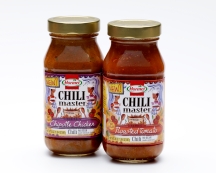COOL regulations raise questions
Lawsuits against snack food companies settled
More American consumers reading nutritional information
Baby formula in paper can
Hormel goes glass for new chili

by Pan Demetrakakes
Executive Editor
The debate over mandatory use of corn for biofuel is getting shriller, with corn farmers and food processors lining up on opposite sides and arguing over cause and effect.
So far, the federal government is holding firmly to the mandate of the energy bill passed by Congress last year. That legislation requires production of 9 billion gallons of ethanol this year and 15 billion gallons by 2022.
In April, Texas Gov. Rick Perry asked the U.S. Environmental Protection Agency (EPA) to trim this mandate in light of spiraling corn prices. But the agency formally rejected that request last week.
“For the EPA to assert that this federal mandate is not affecting food prices not only goes against common sense, but every American's grocery bill,” Perry told the Dallas Morning News.
Joining Perry in his request for a waiver from the EPA were major food processors, including the Grocery Manufacturers Association and the National Chicken Council.
“The RFS [renewable fuel standard] has distorted the market, caused corn prices to spiral out of control and inflicted extreme economic damage on the industry,” Richard Lobb, a spokesperson for the National Chicken Council, told foodproductiondaily.com.
Political considerations played a big part in Perry’s action. Texas has relatively few ethanol plants, but is home to extensive cattle, hog and chicken raising operations, many of which depend mostly on corn as feed.
Even though the EPA rejected Perry’s plea, it resonated politically. Key Republicans, including GOP presidential nominee-to-be John McCain, endorsed Perry’s request for a waiver. He also has received support from international organizations, notably the World Bank, which estimated that biofuel production has pushed up global food prices by 75%.
Farm interests are fighting back. A study released by the Farm Foundation last week maintains that rising corn prices are mostly due to increases in the price of oil.
The study, by a trio of professors at Purdue University, stated that of the $4 a bushel increase in the price of corn over the last four years, $3 is attributable to oil prices and only $1 to the ethanol subsidy.
TOP DEVELOPMENTS
COOL regulations raise questionsSome processors are confused about how their products will be affected when country-of-origin labeling regulations take effect Sept. 30, according to The Packer. Numerous questions addressing topics including product coverage, product commingling and the definition of “processing” were raised at an Aug. 6 webinar held by Western Growers and the Produce Marketing Association (PMA). The law will cover fresh and frozen fruits and vegetables, but it has exceptions for processed products which, according to the United States Department of Agriculture, include cooked, smoked and cured items. According to thePMA’s website, commingling different fruits or vegetables in a package, even if they’re raw, constitutes “processing” that would exempt the product from COOL requirements.
Lawsuits against snack food companies settled
Heinz, Frito-Lay, Kettle Foods and Lance have agreed to reduce the amount of acrylamide content in their products to settle a lawsuit filed by California’s attorney general. Acrylamide, a byproduct of frying, roasting and baking foods containing amino acids, is believed to cause cancer, and is found in high levels in some fried potato products. The settlement follows last year’s agreement by several restaurant chains, including KFC, McDonald’s, Wendy’s and Burger King, to post acrylamide warnings at their restaurants. Heinz agreed to reduce the acrylamide content of its fried potatoes by 50%, and Frito-Lay, Kettle Foods and Lance have agreed to reduce acrylamide to 275 parts per billion over a three-year period.
More American consumers reading nutritional information
Sixty-five percent of American consumers notice nutritional information on food packaging more often now than two years ago, according to a Nielsen study. Notably, 51% check fat content, 48% check calorie content and 43% check trans fat content. Sixty-seven percent of American consumers, compared to 44% of global consumers, claim to “mostly” understand the nutritional information, and an estimated 25.6% of U.S. adults reported being obese in 2007, compared to 23.9% in 2005. Food manufacturers can use this as a marketing opportunity by focusing more on modifying packages and labels.

NEW PACKAGES
Baby formula in paper canHeinz relaunched a brand of baby formula in the United Kingdom in paperboard packaging designed for ease of use. Nuture Growing Baby Follow-on Milk Product comes in cans fromSonocothat comprise two layers of spiral-wound paperboard and a barrier liner. Other features include peelable membrane closure with a metal rim seamed onto the can’s end, easy-grip ring pull opening, a molded plastic overcap with a hinge that allows easy access to the product and closes securely, and a plastic scoop and leveling bar inside the can.

Hormel Foods has come out with a new line of premium chili in glass jars. Hormel Chili Master comes in six flavors, including Chipotle Chicken and Roasted Tomato. The 20-ounce glass jars are supplied bySaint-Gobain, with primitive-art-style label graphics. The products will be in stores in September, with a suggested retail price of $3.49.
